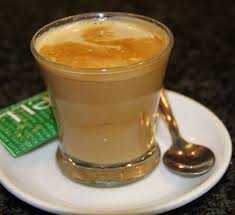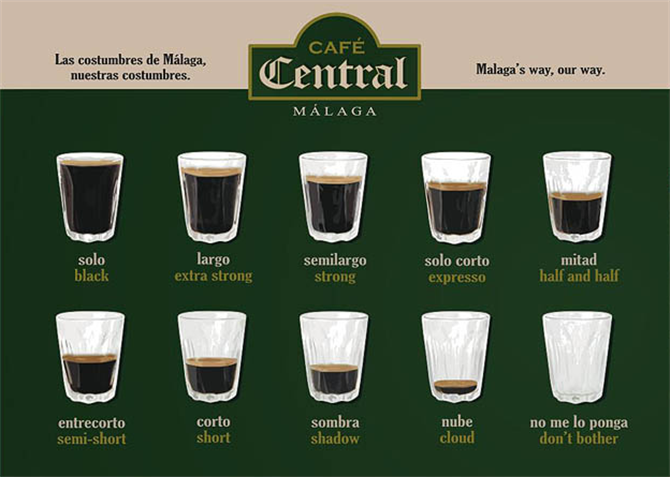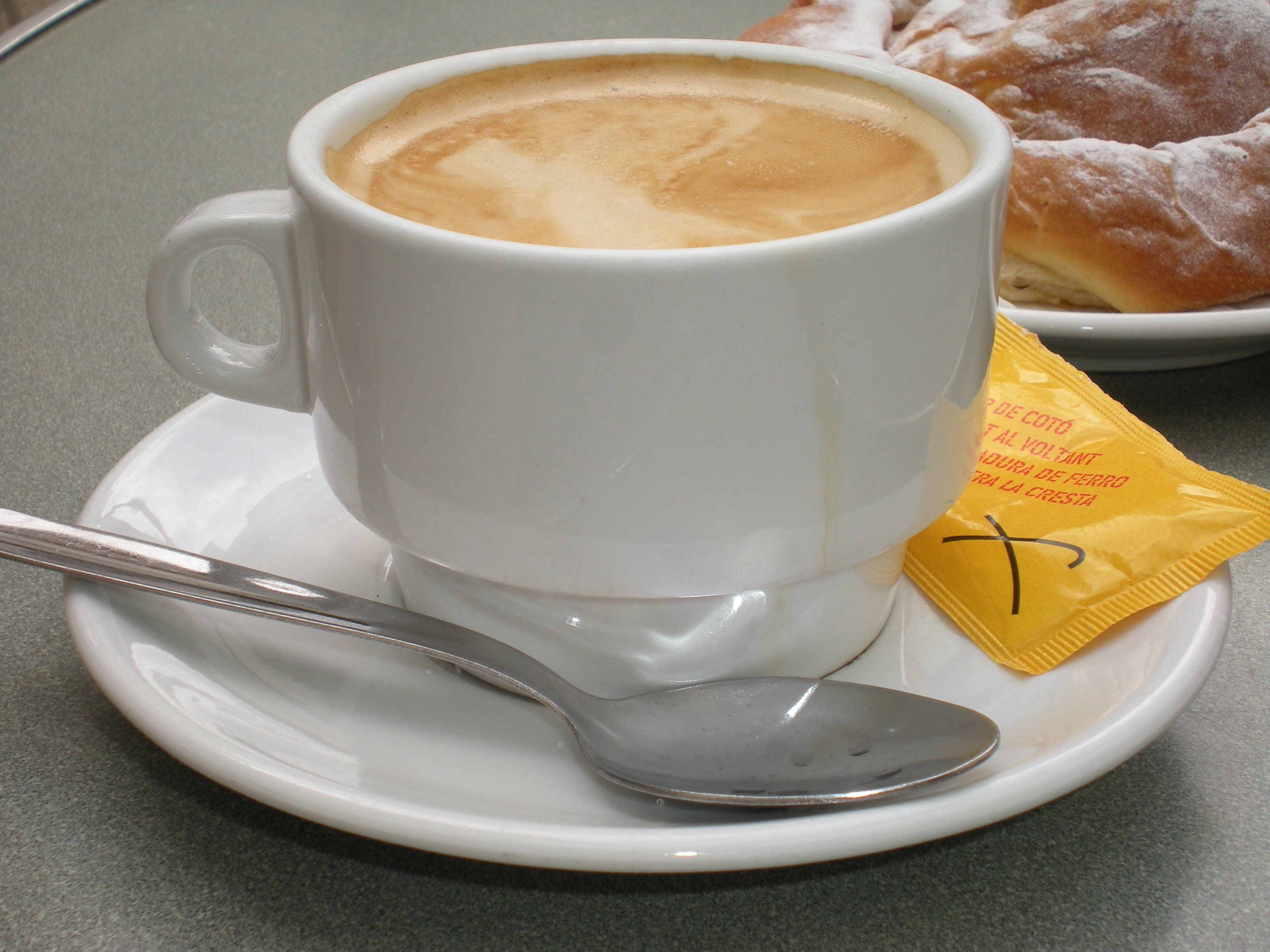One of Spain’s greatest pleasures is sitting outside and enjoying a relaxing cup of coffee. Coffee plays an important role in many countries and Spain is not different with a very strong coffee culture. The weather all year round makes for an enjoyable coffee sitting out under a clear blue sky soaking up the sun even on a chilly winter day. However, customs as always have been engrained on how and when coffee is enjoyed. For  example, it is unthinkable for a Spaniard to order a café con leche after a meal, that is reserved for breakfast or maybe the "merienda" – the afternoon snack. After a meal, it would be a ‘Cortado’ or a ‘Bombón’ or a ‘café solo’ or a "Cortado tocado de Baileys" or a Carajillo if you prefer something a little stronger.
example, it is unthinkable for a Spaniard to order a café con leche after a meal, that is reserved for breakfast or maybe the "merienda" – the afternoon snack. After a meal, it would be a ‘Cortado’ or a ‘Bombón’ or a ‘café solo’ or a "Cortado tocado de Baileys" or a Carajillo if you prefer something a little stronger.
As you can see the options are endless and whichever region you go to they will have a name for a certain type of coffee. For those coming to Spain for the first time, this can get a little confusing as the options are endless. It all comes down to offering the customer the opportunity to enjoy a coffee as they like it, allowing them to personalise their coffee as they wish. This can get extremely confusing for a waiter who is not experienced, as a simple table of 4 can become a real tongue twister when repeating the order. In the summer it is common to hear:
I want a ‘Cortado del tiempo, Descafeinado de máquina, corto de café y tocado de Bailey’s con la leche muy caliente en vaso de cristal’
 And that’s just one order, multiply it by 4 and ask the guy to repeat the order without taking note and it requires a little practice, especially if everyone has their own way of ordering coffee. But that’s the beauty of Spain, don’t be afraid to ask for it the way you want it. In some places like Málaga they have established a system of 9 variations for the combination of coffee and milk, originally designed to avoid wasting coffee in times of need when coffee was very expensive such as after the civil war; some like it stronger and some prefer it weaker, but who would have thought that you would need to establish nine variations to content the customers, have in mind that we are talking about a small glass here of about 120ml so there isn’t much room for error. Throughout my time in Spain I have come across many different ways of having a coffee and I thought I would pull together all the ones I can remember, I am sure there are many missing from the list but maybe you can help to add to the list by kindly leaving a comment at the end of the post. So here goes, the first list are established names, some particular to a region and the second list are the different ways to personalise how you coffee is served :
And that’s just one order, multiply it by 4 and ask the guy to repeat the order without taking note and it requires a little practice, especially if everyone has their own way of ordering coffee. But that’s the beauty of Spain, don’t be afraid to ask for it the way you want it. In some places like Málaga they have established a system of 9 variations for the combination of coffee and milk, originally designed to avoid wasting coffee in times of need when coffee was very expensive such as after the civil war; some like it stronger and some prefer it weaker, but who would have thought that you would need to establish nine variations to content the customers, have in mind that we are talking about a small glass here of about 120ml so there isn’t much room for error. Throughout my time in Spain I have come across many different ways of having a coffee and I thought I would pull together all the ones I can remember, I am sure there are many missing from the list but maybe you can help to add to the list by kindly leaving a comment at the end of the post. So here goes, the first list are established names, some particular to a region and the second list are the different ways to personalise how you coffee is served :
1. Café Solo: Same as an espresso
2. Café Americano: Half a glass of coffee and then topped up with hot water
3. Café con Leche: Standard white coffee normally 50/50 coffee and milk. Normally for breakfast/mornings. Served in a cup.
4. Café con leche corto de café: White coffee with slightly less coffee in it 30/70 coffee and milk.
5. Café Cortado: Coffee with milk served in a small glass, normally for after meals. 50/50 Coffee and milk
In Málaga and areas in the region, these are the 9 variations established originally by the bar Café Central -

6. Café Bombón/Biberó/Goloso: Served in a small glass. Condensed milk is poured into the bottom of the glass and the coffee is added on top. Same glass as a Cortado. You mix it with the spoon.
7. Carajillo / Café Brulé: Coffee with a dash of Brandy – the proper version of this involves heating up the brandy with a lemon zest and 4 coffee beans, it is then passed through a small sieve and added to the black coffee.
8. Asiático: Typical in Cartagena and other areas of Murcia. It is a black coffee with Condensed milk, Brandy, Licor 43 and cinnamon.
9. Belmonte/ Trifásico: Black coffee with condensed milk and Brandy
10. Barraquito: Popular in the Canary Islands. It has Coffee, milk, and condensed milk. It can also include, cinnamon, lemon and liquors.
11. Manchado: in Murcia this is a Bombón with less coffee.
12. Suau: A Catalan summer drink – Coffee, Soda, sugar, cinnamon and vanilla. Served with ice.
13. Café Granizado – Iced coffee with crushed ice in a slush drunk with a straw

Personalising your coffee:
Del tiempo ó con hielo: served with a glass of ice to pour the coffee into and drink it cold.
Descafeinado de máquina: Coffee machine decaffeinated
Descafeinado de sobre: Nescafé in a sachet.
Tocado de ………… – add any liquor/spirit such as Bailey’s or whisky
Temperatura del leche – leche caliente / leche natural
Corto de Café – Just over a half measure of coffee.
En vaso (de cristal) – served in a glass
En taza - served in a cup
So you can see how easy it is to order a :
‘Cortado del tiempo, Descafeinado de máquina, corto de café y tocado de Bailey’s con la leche muy caliente, en vaso de cristal, por favor’ !
How do you like yours?